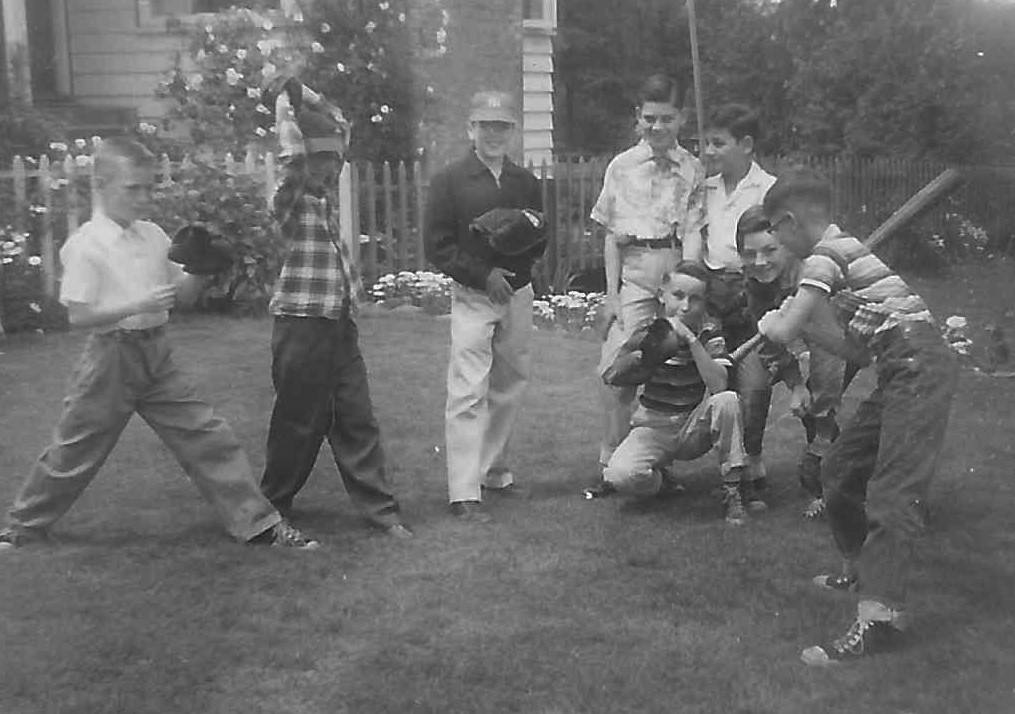When we were kids and wanted to play baseball, more than often we had too few players to play a full game with two teams. There were two options: scrub and ping-pong.

For scrubs, when the bell rang for lunch or the end of the school day, the boys would make a run for the baseball diamond in the school playground. The first person to touch home plate was deemed first up and then as others touched home, positions were assigned in the order of arrival.
We usually played with 3 up, which meant 3 players were designated as batters. The remainder were in a queued order,
The next players touching home were assigned as 1. Catcher, 2 pitcher, 3 first base, 4 second base, 5 shortstop, 6 third base, and the rest were outfielders in the order of arrival.
The game proceeded like any other baseball game, except there were no teams and score was not important. Those that were batters stayed as batters until they were out. Once they were out, everyone moved up a place in the order: the catcher became a batter, the pitcher became the catcher and so on. The “out” batter had to go to the end of the queue in the outfield and wait to work their way back into the infield and then to be a batter. Given the after-school nature of many games, someone might have to go home and lose their position, which created another rotation.
Scrubs worked best when there were a dozen or more kids wanting to play. That way there could be a kid at every position.
If we only had six or eight kids, we would play American ping-pong. The kids would divide into two teams, one at bat and one in the field. The batting team provided its own pitcher and catcher.
The field would be cut in half, so only the left side or right side of the diamond would be used. With the left side, for example, the batter had to hit the ball between second and third base or he was out. The pitcher, from his own team, lobbed the ball easily to the batter making it easy for him to hit.
If the batter swung and missed, he was deemed to be out. If he hit a fly ball which was caught, he was also out. If he hit a foul ball, he was out. The batter wasn’t required to swing at any given pitch and there were no balls and strikes called. This allowed the batter to choose a pitch they liked.
If the batter hit the ball on the ground to shortstop (that is between second and third), it was deemed a single, if it went past the shortstop into the outfield, it was a double; if it went past the outfielder, it was a triple; if it went over the outfielder on the fly, it was a home run. Runners were imaginary/virtual and advanced based on imaginary bases depending on how many bases the batter achieved – one base for a single, two for a double and so forth.
The defensive team would provide infielders and outfielders, but only on the right side where the ball had to be hit. For left-handed batters, the fielders switched sides of the diamond.
Once three outs were achieved, the teams exchanged places. Score was kept based on the virtual runners crossing home plate. The game was faster and required fewer players. It was an after school or weekend school yard game when there weren’t a lot of kids around.
The way teams were chosen was for two “captains” to be agreed to. Then a bat was tossed in the air. Whichever captain grabbed it first, had to hold it vertically. The opposing captain then put their hand above where the existing hand was, gripping the handle. So it went with the two captains, hand over hand until there was no room on the bat for a grip. The top grip holder had to hold the bat well enough to circle his body without dropping it. Few of us could hold the nub on the bottom for the bat with our fingertips and bear its weight swinging around our bodies.
That done. Let’s play ball.